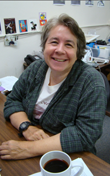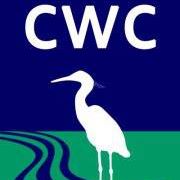 Q1. What is your educational background?
Q1. What is your educational background?
I received by Bachelor’s degree in Zoology at the State University of Ghent, Belgium, my MSc. degree in Biology at George Mason University in Fairfax VA, and my Ph.D. in Botany at the University of North Carolina at Chapel Hill. I subsequently was awarded postdoctoral fellowships at the Smithsonian Institution in Washington D.C., UNC-Chapel Hill and Duke University, before landing at the University of Louisiana at Lafayette where I currently am a Professor of Biology doing biodiversity research on seaweeds, especially red algae, worldwide.
Q2. What inspired you to become a scientist?
When someone asked me as a young child what I wanted to be when I grew up I would always respond “a zoologist”. I was always trying to learn the names of birds, plants, or dragonflies. After taking a class in nematology as an undergraduate student I became interested in how certain species of marine worms lived in close association with seaweeds and, thanks to the worms as go-between organisms, I fell in love with the algae.
Q3. What is your role as a scientist for CWC?
My laboratory’s research focus is on the rubble/rhodolith habitats of the deep outer shelf banks in the NW Gulf of Mexico. We compare genetic structure and dynamics of indicator populations of macroalgae in relation to pre-DWH oil spill measures. This research is done in close collaboration with Dr. Darryl Felder whose target organisms are macrocrustaceans.
Q4. What do you like the most about doing scientific research?
The unexpected. The open-endedness of any research question and problem that may lead to more questions and problems. To remain baffled, after all these years, by the extraordinary structure, diversity, and adaptations of marine algae to their respective habitats, and for the wonderful privilege of learning something new and fascinating about algae every day.
Q5. Can you describe any surprising findings you have come across so far?
Prior to the 2010 BP Deepwater Horizon oil spill, the deep bank rubble habitats were prominent features harboring the highest known macroalgal diversity in the northern Gulf. Following the 2010 blowout, conspicuous macroalgae found at proximity of the Macondo well have all but disappeared and to this date have not recovered to pre-spill levels. However, laboratory microcosms established with “bare” rhodoliths or partly algal-denuded unconsolidated rubble sampled that were collected as “live rocks” at Fish Haven and Sackett Bank during April 2011 and subsequent field collections, revealed within three weeks a wealth of red, green and brown seaweed germlings, and other algae, that to this day continue to grow to adult size and to reproduce in our tanks. This indicates that alternative resting stages of algae were present within the rhodoliths but repressed in the field at the time of the post-spill sampling. Our current “seedbank” hypothesis focuses on understanding the function of the rhodoliths for ecosystem resilience and regeneration.

